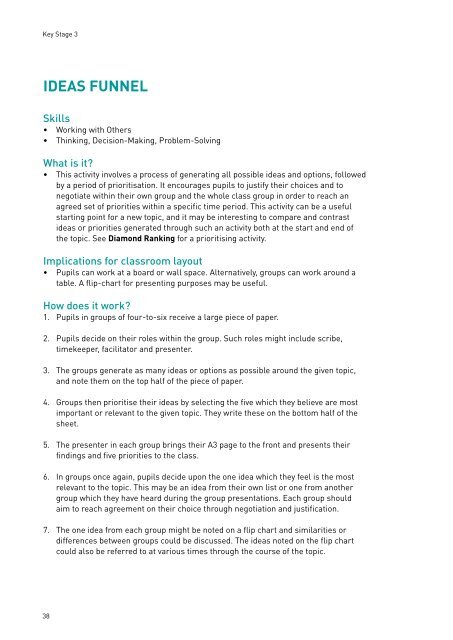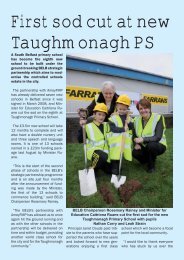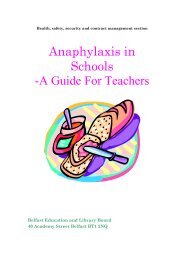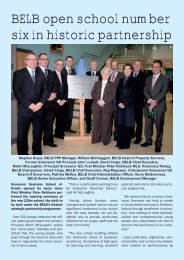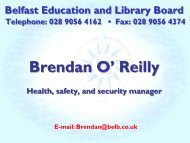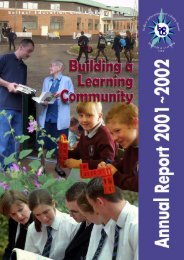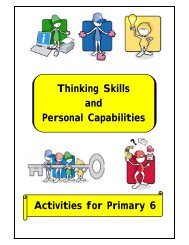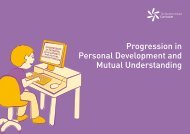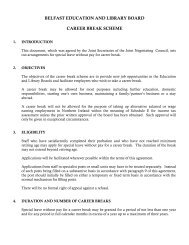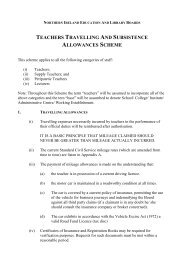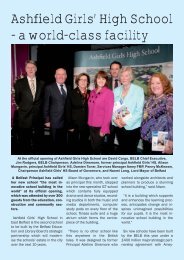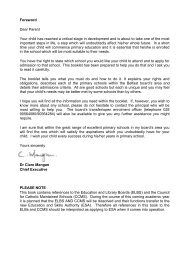Active Learning and Teaching Methods for Key Stage 3 - Northern ...
Active Learning and Teaching Methods for Key Stage 3 - Northern ...
Active Learning and Teaching Methods for Key Stage 3 - Northern ...
Create successful ePaper yourself
Turn your PDF publications into a flip-book with our unique Google optimized e-Paper software.
<strong>Key</strong> <strong>Stage</strong> 3IDEAS FUNNELSkills••Working with OthersThinking, Decision-Making, Problem-SolvingWhat is it?• This activity involves a process of generating all possible ideas <strong>and</strong> options, followedby a period of prioritisation. It encourages pupils to justify their choices <strong>and</strong> tonegotiate within their own group <strong>and</strong> the whole class group in order to reach anagreed set of priorities within a specific time period. This activity can be a usefulstarting point <strong>for</strong> a new topic, <strong>and</strong> it may be interesting to compare <strong>and</strong> contrastideas or priorities generated through such an activity both at the start <strong>and</strong> end ofthe topic. See Diamond Ranking <strong>for</strong> a prioritising activity.Implications <strong>for</strong> classroom layout• Pupils can work at a board or wall space. Alternatively, groups can work around atable. A flip-chart <strong>for</strong> presenting purposes may be useful.How does it work?1. Pupils in groups of four-to-six receive a large piece of paper.2. Pupils decide on their roles within the group. Such roles might include scribe,timekeeper, facilitator <strong>and</strong> presenter.3. The groups generate as many ideas or options as possible around the given topic,<strong>and</strong> note them on the top half of the piece of paper.4. Groups then prioritise their ideas by selecting the five which they believe are mostimportant or relevant to the given topic. They write these on the bottom half of thesheet.5. The presenter in each group brings their A3 page to the front <strong>and</strong> presents theirfindings <strong>and</strong> five priorities to the class.6. In groups once again, pupils decide upon the one idea which they feel is the mostrelevant to the topic. This may be an idea from their own list or one from anothergroup which they have heard during the group presentations. Each group shouldaim to reach agreement on their choice through negotiation <strong>and</strong> justification.7. The one idea from each group might be noted on a flip chart <strong>and</strong> similarities ordifferences between groups could be discussed. The ideas noted on the flip chartcould also be referred to at various times through the course of the topic.38


